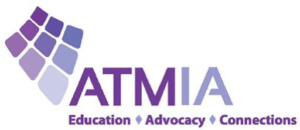
An uncertain future faces cryptocurrency, though there is potential for mainstream adoption in the next decade. As this tech is really only in its infancy, a lack of regulation, slow transaction times and overall instability keep onlookers watching from afar for now. This currency shows immense promise, however, so hope remains for the resolution of the main issues acting as barriers to the widespread adoption of cryptocurrency. Until that occurs, those interested in this market may remain on edge, waiting for whatever awaits around the next corner.
Bearish Trends in Virtual Coin Prices
Amid the growing popularity of blockchain technology in 2017, Bitcoin prices steadily rose to an all-time high of almost $20,000. As the shortcoming of cryptocurrency came front and center, the market took a rather bearish turn with the value of Bitcoin toppling down to just over $3,600 by the end of 2018. Cryptocurrency trading continues to remain subdued and cautious with many hoping to ride out the lows and recover their losses in the near future.
Although turbulent, this process helped pull back the curtain on the barriers preventing cryptocurrency from maintaining stable interest and usage across many different industries. Until the barriers regarding a lack of regulations, slow transaction times and instability can be addressed, cryptocurrency values will likely continue to stall.
Future Predictions in Cryptocurrency Values
Cryptocurrency values will likely hold steady as the market awaits decisions from the U.S. Securities and Exchange Commission (SEC) about the proposed bitcoin exchange-traded fund. This proposal shows promise in providing a structured way to trade cryptocurrency on the open market. A similar proposal has already been rejected, however, due to lack of investment security regulations. The creators of the bitcoin exchange-traded fund went back to the drawing board with the reasons for the rejection in mind to create an even better plan for the next attempt. With the most recent delay by the SEC, the decision will not come until February 2019.
Even with the establishment of beneficial regulations and the bitcoin exchange-traded fund, long transaction times will require attention before perceptions about cryptocurrency begin to change. Current transaction times can range from just a few minutes to hours as the miners in the system work through the confirmation process. Proposed solutions range from increasing the block size to speeding up the network to overcome this barrier to cryptocurrency success. None of the proposed solutions have been implemented and there is no timetable for doing so.
Even with those issues out of the way, there is still instability to think about, as the rapid spikes and dips in value colors public perception the most. With the widespread adoption and usage of cryptocurrency, it is possible to limit the instability characterizing the market today. Obtaining the trust of the public before the currency truly stabilizes will be the trick, however.
Public Perceptions About Cryptocurrencies – and the Need for Change
Beyond the three main barriers, the uncertainty of the future of cryptocurrency really comes down to public perceptions. If people even know about cryptocurrency, their perceptions are largely negative with many viewing the system as a scam or fraudulent in some way. The complexities of blockchain technology do not help the image of this digital currency either.
Overcoming the barriers making the future of cryptocurrency uncertain will take a dramatic shift in public perceptions. People need to have trust in the system to adopt it as a part of everyday life. Until that happens, the mainstream adoption of this currency and rebound of bitcoin values remains quite a way down the road.
![]()








